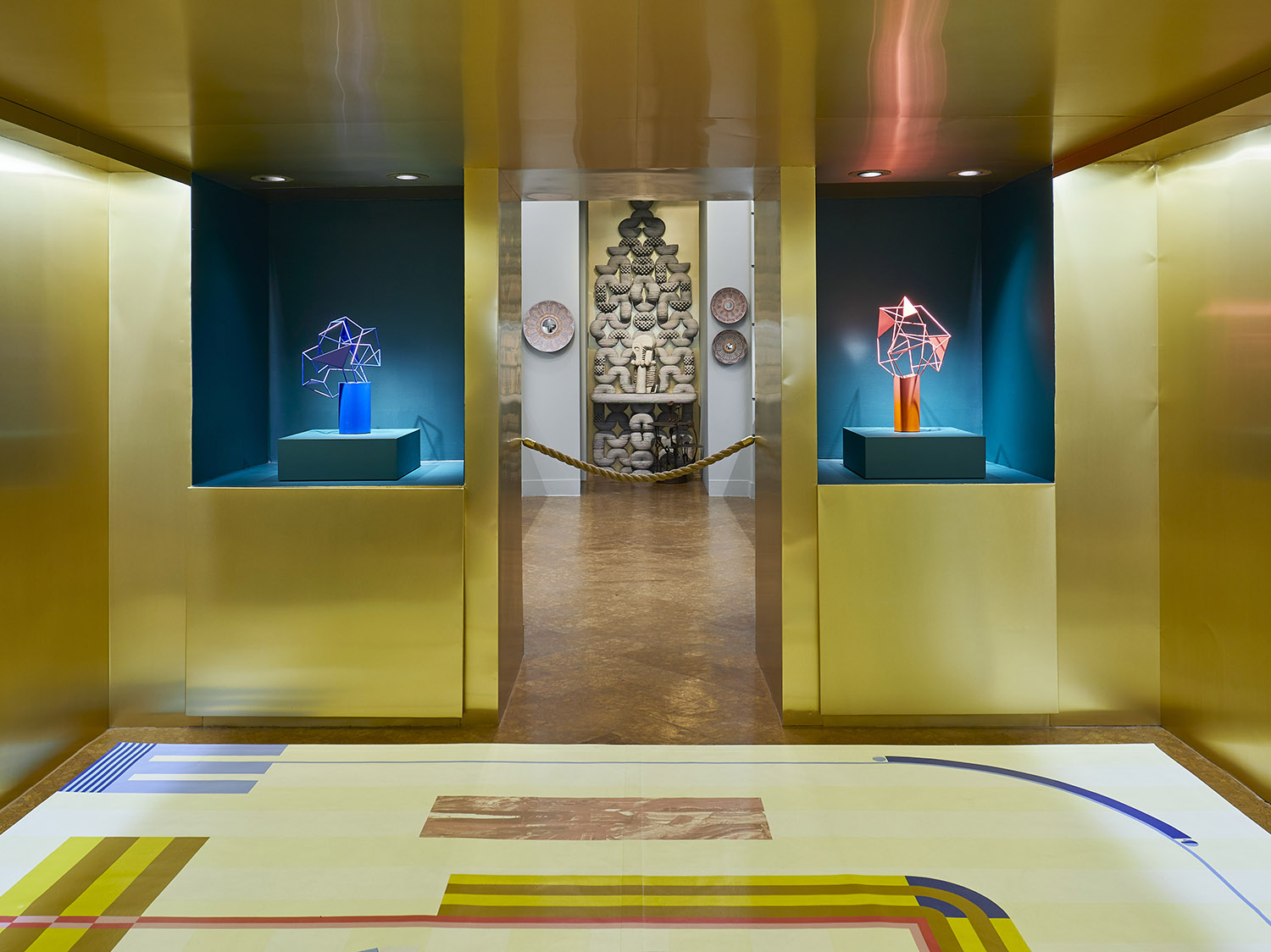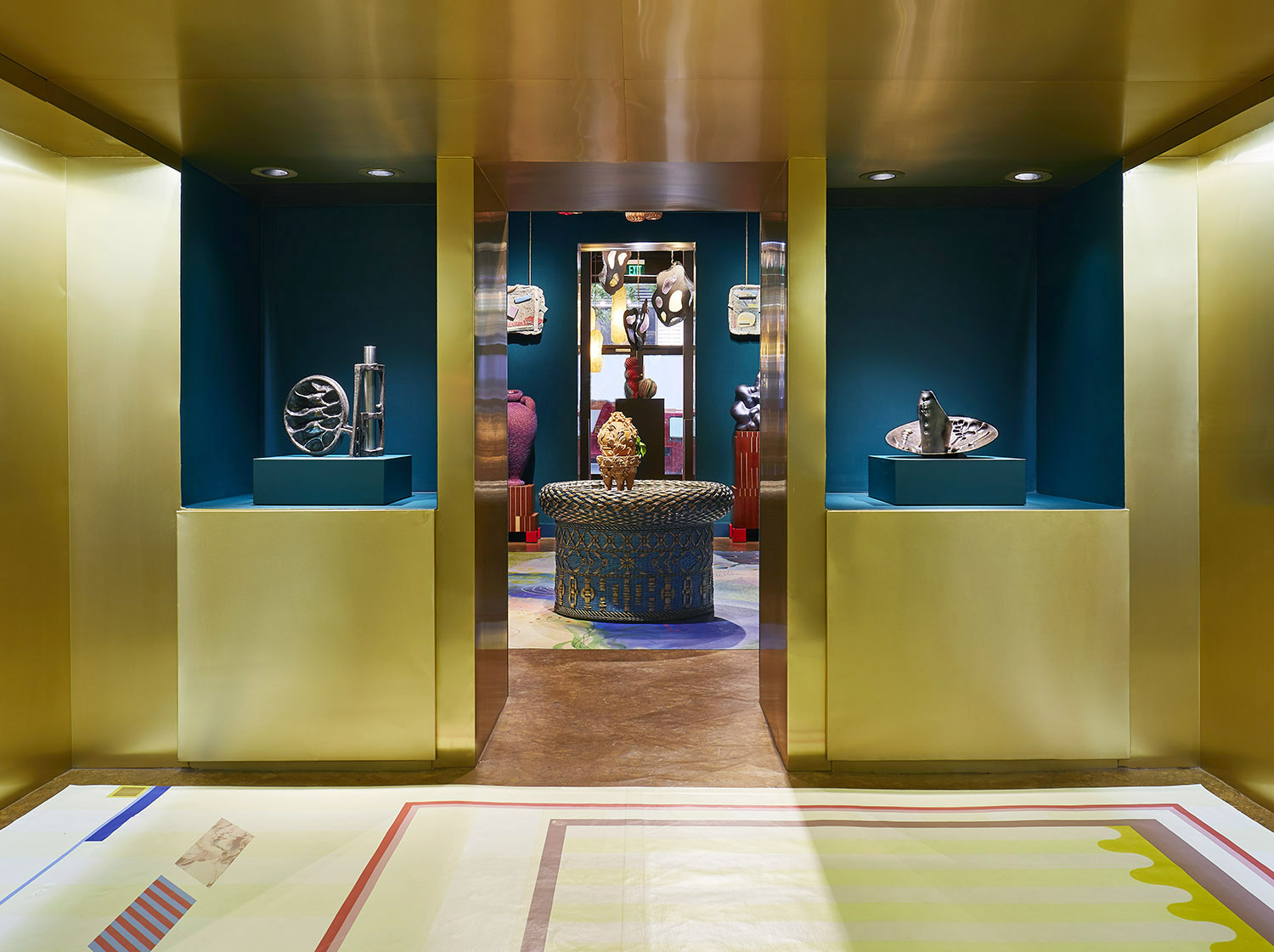(Dis)similar: Ane Christensen & Rachel David
| Sept 6 - Oct 14, 2023 |

It would be hard to find two contemporary metal artists more perfectly equal in skills and achievement. It would be difficult to find two metal artists more perfectly distinct in technique, aesthetic, and approach. This study in contrasts is as noteworthy for the chasm between the two as it is for their respective success and achievements in the medium of metal. From London, Danish artist Ane Christensen brings to her work a predilection for precision and strategy, courtesy of her training as a jeweler. Ane’s modernist backyard atelier, a tailored fit among the row houses, is as much a private laboratory as it is a studio. There are no pounding hammers or smoky forges in Ane’s process; working from precise maquette, she constructs her well-planned forms from prepared building blocks consisting of tubing, rods, wire, sheets and spun bowls. The focus is on perfection of assembly, shaping and delicately filing the parts to fit, then soldering them together seamlessly. Each element remains crisply defined in the final form, so that the viewer may mentally deconstruct it into component parts with ease. Ane succinctly characterizes the work, saying “There are no secrets, and nowhere to hide.” Formal concerns drive Ane’s work and are most clearly expressed in its reliance on contrasting elements, typically a geometric foundational form which is disrupted by lines and negative space. Basic and solid forms interact with open and diffuse ones. It is in the meeting of the two, their connection, that a symbiosis emerges, a yin-yang. Ane’s bowl, “Negative”, in the collection of the Victoria & Albert Museum is an excellent representation of this. In Ane’s new work presented in this exhibition, color appears for the first time since her student days at the Royal College of Art. This significant development buttresses the scale and visual presence of the work. The basic form is a solid cylinder supporting and intersecting a large and angular cloud of rectilinear forms in outline, as if the cylinder is dematerializing or coming into form. The result is that Ane has created a framing device through which to view and contemplate space, inviting to imagine reality itself forming or dematerializing. |

From Asheville, American firebrand Rachel David works like a storm of creative energy. Rachel’s outlook is steeped in the lively culture of her once longtime and formative hometown of New Orleans, and tied to her activist nature evinced by her co-founding of the Society of Inclusive Blacksmiths. Rachel’s rural and hangar-like studio thrums with activity, oversized machinery and boisterous friends and dogs. For Rachel, concept and craft are coequals forces that merge in the creative action of physically manifesting an object. Particularly with the artist’s repousse sheet work, flowing forms emerge fluidly in process, as with paint on canvas. Rachel’s large bench, “To One End”, at the Smithsonian’s Renwick Museum is an excellent representation of this. Her exuberant and organic forms explicitly represent the energy and positivity that goes into creating them. The artist says of her work: “The very physical and technically demanding process of forging and forming shapes in glowing, radiant, yellow steel is my passion. Through this process I engage broader issues like ‘body’ and ‘landscape’ through a lens of social and environmental justice. Turning a dream of a form into the brutally hard reality of metal is a source of pride and identity that I strive to reflect in my work.” In the new pieces for this exhibition, evolution and experimentation abound. “Scales” is the artist’s largest mirror to date and the first large work to incorporate polished selenite crystals. The title of the work refers to musical scales as a metaphor for developing skill, and alligator scales as a tribute to her former Louisiana home and the power of the animal. Her two vessels in the exhibition also feature expressive repousse work; one composed entirely of it, the other supported within a forged frame connecting to a tubular vessel that is also the artist’s first instance of incorporating unaltered stock material into a finished work. To see these the work of these two talented contemporary metal artists side-by-side is to recognize the heights and the breadth of work possible in this material that is at once ubiquitous in our modern world and now, curiously, relatively rare as a medium of creative expression. - Damon Crain |

